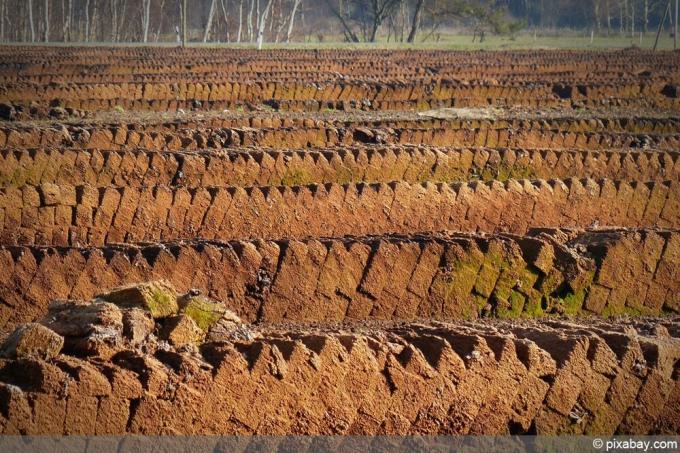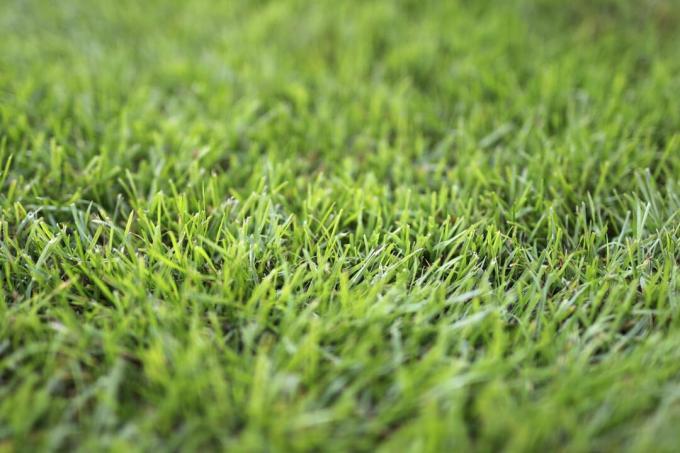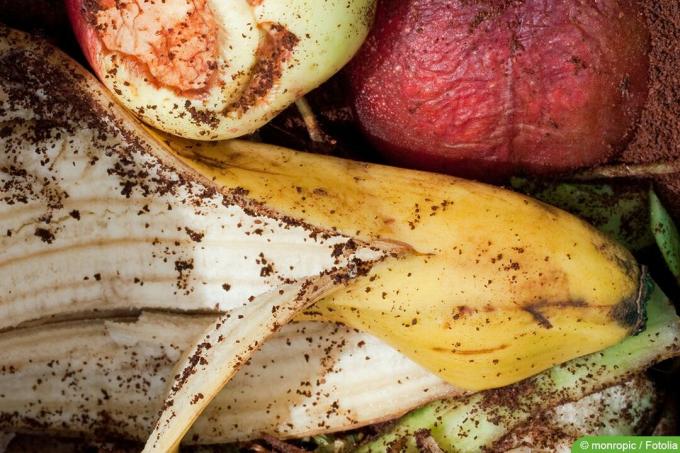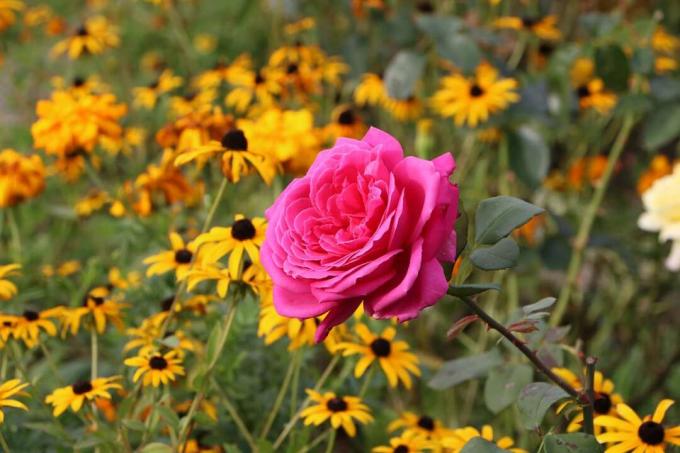

Table of contents
- Criticism of the use of peat soil
- Reduce peat in the garden
- Frequent watering required
- Ensure optimal care
- peat soil vs. nutrient-rich soil
- Create natural conditions
- Keep potted plants in peat soil
- Renew plantings regularly
- Liquid fertilizer for potted plants
- Acidic soil as a perfect basis for many species
- rhododendron
- Bergenia
- fern
- pasqueflower
- orchid
- primrose
- iris
Peat is extracted in its pure form from moorland and then industrially processed into a special soil that is rich in nutrients. These nutrients ensure that the soil has an acidic pH when you enrich it with peat. This is an advantage for many plants, because they love acidic soil and can develop particularly well.
Criticism of the use of peat soil
Sometimes the use of peat soil in the garden is criticized. It takes decades for a bog to form with the nutrient-rich soil. In addition, moor areas offer many animals and plants a habitat that is disturbed by peat extraction. Therefore, it is often recommended to avoid peat soil. However, this strictness is not necessary, because there are numerous moor areas in Germany and the stock is by no means endangered. Nevertheless, it is advisable if you keep nature conservation in mind and use the peat soil sparingly. This not only protects the environment, but also makes work in the garden easier.
Reduce peat in the garden
If you only surround plant species with the nutrient-rich soil that like acidic soil, you can use the soil without hesitation and you prevent a greater effort in garden maintenance before. However, it is not advisable to enrich the entire garden with peat soil.
Frequent watering required
However, there are also disadvantages associated with processing the peat in the garden, which you should be aware of before you decide to use it. So the soil becomes very heavy and impermeable. He can no longer absorb large amounts of water. The consequence of this is that rainwater cannot penetrate deep into the ground. A large part evaporates on the surface. As a result, you will need to water any plant surrounded by peat soil regularly, especially in the summer. The sun dries out the soil, which is enriched with peat soil, very quickly. As a result, the roots do not get any water and the plant cannot develop optimally. In the worst case, she dies.
Ensure optimal care
If it rains for a long time and the soil is well moistened, you don't need to water because a part of the water can be absorbed and soaks into the soil so that the plants are optimally supplied can. In any case, it is a good decision if you use the nutrient-rich peat soil for plants that prefer acidic soil. In most cases, this will only be the case in a small part of your garden. As a result, the effort for the special care of the soil is manageable and you don't have to worry about nature conservation or the protection of the moors.
Tip:
When buying, pay attention to high-quality clay soil that does not contain any chemical additives. Only then can you be sure that your plants are optimally cared for.
peat soil vs. nutrient-rich soil

There are numerous plant species that prefer acidic soil and thrive particularly well in it. However, this does not mean that you cannot also plant the species in normal nutrient-rich soil. If, for various reasons, you decide against using peat soil, choose a classic potting soil that is enriched with compost. This potting soil has several advantages:
- is obtained from compost and is environmentally friendly
- inexpensive to purchase
- can be made by yourself in the presence of a compost heap
When using potting soil, enrich the soil with an acidic fertilizer to provide the plants with the best possible care. However, use fertilizer sparingly and allow the soil to rest during the cold season, November through February. Then make sure that your plant always gets an ideal supply of nutrients, but is not oversupplied. In the worst case, this can lead to the plant dying.
Tip:
When using fertilizer, pay close attention to the directions on the packaging and don't give in a bit. The information has been tried and tested and you are doing everything right in every case.
Create natural conditions
When creating a new garden or making changes, you will certainly want to use new types of plants. If you do not yet know the needs of a new plant, it is always advisable to take a close look at the care instructions. You can not only find out whether the plant prefers sun, shade or partial shade. You will also learn what soil the plant thrives in best. The information is taken from the origin of the plant. A plant that you can buy here and in Germany will be adapted to the conditions to a certain extent through breeding. This means that if she thrives in acidic soil in the wild, she can also thrive in regular soil. Still, make some adjustments by learning about plant culture. The better the conditions match those of the natural environment, the more pleasure you will get from your plant.
Tip:
The description often mentions acidic soil. These species are very fond of peat soil and you can enter the plant in such soil.
Keep potted plants in peat soil
Not all species are hardy and so you need to make sure you overwinter the plant in question indoors or in a conservatory during the winter. The soil in the plant pot should also be adapted to the needs of the plant. This means that a plant that prefers acidic soil and thrives particularly well in peat can also be planted in a pot in soil with added peat. In this case, however, pay attention to particularly frequent watering so that the roots remain moist and are supplied with sufficient water.
Renew plantings regularly

It is very important that you renew the soil in the potted plants at least once a year. Spring is a good time. If you can arrange to repot your plant in the spring and fall, it will thank you. This is particularly advisable if your plant is only housed in a very small pot. The nutrients are then quickly used up and the plant can no longer develop very well. New planting combines various advantages:
- fresh nutrient-rich soil
- easy enrichment with fertilizer
- The soil is loose, the roots can develop well
- free from pests that can settle in the top after a long time
- Water is absorbed better
- Possibility to use a larger pot for the better development of the plant
Liquid fertilizer for potted plants
The use of liquid fertilizer is a very good recommendation for potted plants. The rainwater cannot distribute the solid fertilizer so well in the pot. If you place the plant in a sheltered room in winter, watering will not be enough to distribute the solid fertilizer either. Therefore, use liquid fertilizer for all potted plants that prefer acidic soil. This is especially true for potted plants that you have not planted in peat soil.
Tip:
Pay attention to the ratio of peat to classic soil. This is particularly important for a container plant, as the roots also need loose soil for healthy development. Outdoors, insects and rainwater ensure good mixing. However, this is not the case in pots and tubs.
Acidic soil as a perfect basis for many species
Basically, peat is not harmful. If you live in a region where there is a lot of peat in the soil, it won't be detrimental to species that don't need acidic soil. Rather the opposite is true: peat soil has a high nutrient content that most species benefit from. Nevertheless, it is not recommended to enrich the entire garden with peat. On the other hand, the protection of the moors speaks against it, but also the fact that you have to water very often. It is better to give the peat soil to the species that really need it. Many well-known species that are hardy and are very popular in gardens love acidic soil. Here you can find out which species feel particularly at home in peat soil:
rhododendron
Rhododendrons are particularly demanding when it comes to soil. They are among the types of plants that should definitely be placed in acidic soil or at least fertilized regularly. Especially if you live in a region where the soil is very fine and sandy. There you may not have any luck with a rhododendron. Therefore enrich the soil very well with peat soil. Since rhododendrons belong to the heather family and have shallow roots, you do not need to dig the nutrient-rich soil too deeply. Rhododendrons are hardy and can grow very wide. You should take this into account when planning your garden.
Bergenia
The bergenia is also often called winding roots in German. It forms very beautiful and large flowers that look particularly appealing in the garden. In its Asian homeland, the Bergenia prefers to thrive in very nutrient-rich soil. If you want to plant the plant in your garden, you should therefore make sure that the soil is acidic. Mix regular plant ends with peat and work with solid or liquid fertilizer throughout the year. The Bergenia is hardy and only partially suitable as a container plant. But it looks particularly appealing in rock gardens and front gardens.
fern

Ferns are very versatile and grow in forests and on the edges of meadows. These varieties are quite undemanding. There are a variety of varieties that you can use in the garden, but also as a houseplant. Make sure you have nutrient-rich soil, especially for houseplants and potted plants. The varieties that grow in local areas only need classic care and not necessarily a special soil.
pasqueflower
The common pasqueflower, alternatively known as pasqueflower, is a very popular garden plant. The large flowers resemble a cowbell and gave the plant its name. You will find the pasque flower on the edges of forests and meadows in the wild because it is native to our climes. The plant loves acidic soil, so you should enrich the soil with peat if you want to plant pasque flowers in your garden.
orchid
Orchids are indoor plants that are quite demanding in their care. They develop beautiful, brightly colored buds that can bloom for a very long time. However, if they are lost, it can take years for the plant to form a new flower. When caring for an orchid, make sure that the plant never dries out. But she mustn't get her feet wet either. It is also important that orchids get plenty of light and are not exposed to drafts.
primrose
The primrose is one of the annual flowering plants. It is quite insensitive to cold and can be planted outdoors in pots and tubs as early as February. Vigorous plants that are well cared for can flower well into the summer. If you like it, you can plant new primroses again in the fall. They will bloom until the first frost. If you enrich the tub in which you plant the primroses with peat soil, the plant will develop particularly beautiful and strong flowers and it can also bloom longer.
iris
The iris is one of the most popular garden plants. It should be planted outdoors as it is not very suitable for pots and tubs. The plant develops from a tuber that you plant deep in the ground. In the spring it expresses its long pointed leaves. From this the flower develops. Many lilies bloom yellow, white, or purple. Unfortunately, the flowering period is very short. It is between May and July. Enrich the soil with peat once a year to provide the plants with the best possible care.
 garden editorial
garden editorial I write about everything that interests me in my garden.
Learn more about fertilizing

Make effective nitrogen fertilizers yourself lawn fertilizer
In order to develop optimally, plants need sufficient nutrients. For example, nitrogen, one of the main nutrients, is indispensable. If this is not present in sufficient quantities in the soil, satisfactory growth cannot take place. As a result, it must be delivered.

Dried banana peel as fertilizer | Application tips
Bananas are popular and healthy. The banana peel usually ends up in the trash. But it is far too good for that, because the dried shells are an excellent fertilizer for a variety of garden plants.

Horn meal: with fertilizer against clover in the lawn | 7 tips
In the lawn, clover is usually undesirable. With too little fertilization, however, it spreads quickly. Horn meal can help as a biological fertilizer. See this article for tips on how to use it.

Unusual Fertilizers | 13 home remedies that can do more
Much of what accumulates in the household and usually ends up in the organic waste bin can be used to fertilize garden and/or indoor plants. They offer an ecological alternative to mineral fertilizers and score with environmental compatibility and sustainability.

Fertilizer for roses: 15 home remedies for fertilizing roses
In addition to rose fertilizer, numerous home remedies are also suitable as nutrient suppliers for roses. We present the most popular ones in this article!

Fertilize properly | What good is low-nitrogen fertilizer?
No plant can survive without nutrients. Only with optimal and needs-based care can they develop magnificently, bloom lavishly and bring rich harvests. As a result, fertilizer plays an important role in care, provided the ingredients and dosage are right.
